Are you curious about the influence of horseback riding on equine assisted psychotherapy? Well, you’ve come to the right place. In this article, we’ll dive into the fascinating world of how horseback riding can positively impact therapy sessions. Whether you’re a seasoned equestrian or someone interested in exploring alternative therapy methods, you’ll learn how interacting with horses can provide numerous psychological and emotional benefits. So, let’s saddle up and explore this unique connection between horseback riding and equine assisted psychotherapy!
So, you might be wondering, how exactly does horseback riding influence equine assisted psychotherapy? Well, the answer lies in the powerful bond between humans and horses. When individuals interact with horses, whether it’s grooming, riding, or simply being in their presence, a sense of connection and trust is fostered. Horses are highly perceptive animals, capable of sensing and responding to our emotions, making them perfect partners in therapy.
Through this unique form of therapy, individuals can develop crucial skills such as communication, empathy, and self-awareness. Horses have a way of reflecting our emotions and behaviors, offering valuable insights into our own thought patterns and relationships. This can aid in addressing issues such as anxiety, trauma, and interpersonal difficulties. So, if you want to learn more about the undeniable benefits of horseback riding in equine assisted psychotherapy, read on!
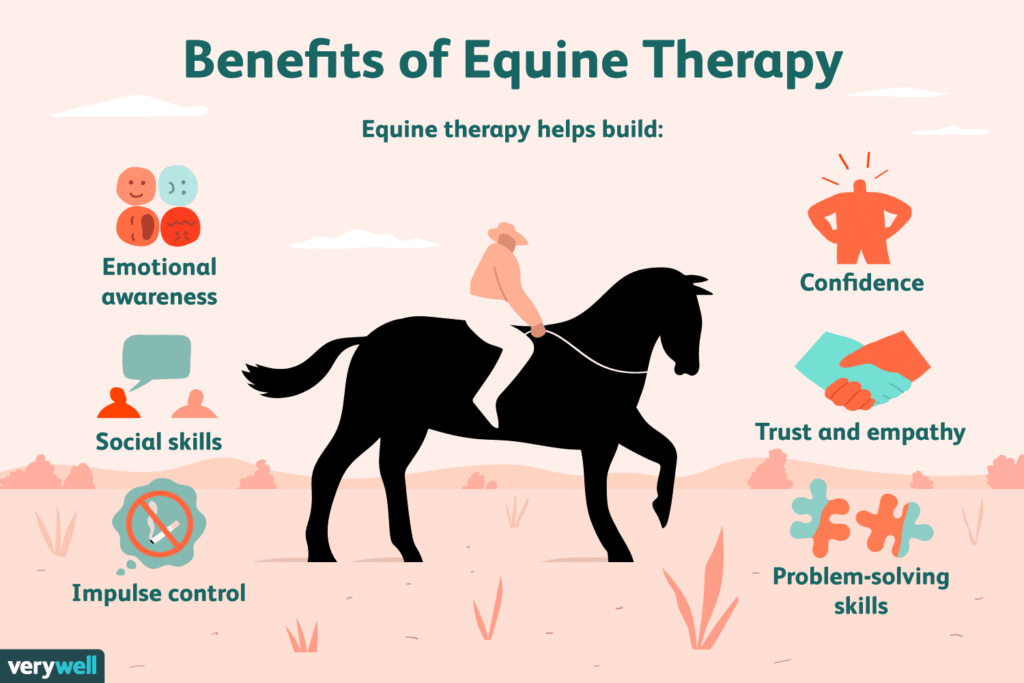
Horseback Riding and its Influence on Equine Assisted Psychotherapy
Horseback riding is an ancient practice that has been incorporated into numerous cultures throughout history. It not only serves as a recreational activity but also plays a significant role in the field of therapy, specifically in Equine Assisted Psychotherapy (EAP). EAP combines traditional psychotherapy methods with interactions involving horses, resulting in unique therapeutic benefits. In this article, we will explore the connection between horseback riding and EAP, as well as delve into the various aspects of horseback riding, including its history, psychological effects, training, safety, recreational aspects, and more.
What is Horseback Riding?
Horseback riding, also known as equestrianism, is the skill of riding, driving, or vaulting with horses. It involves various disciplines, each with its own set of rules and techniques. One can engage in horseback riding for recreational purposes, leisurely trail rides, or take it to the competitive level. Different disciplines of horseback riding include dressage, show jumping, eventing, endurance riding, Western riding, and many more. Each discipline requires unique skills and equipment, catering to different styles of riding.
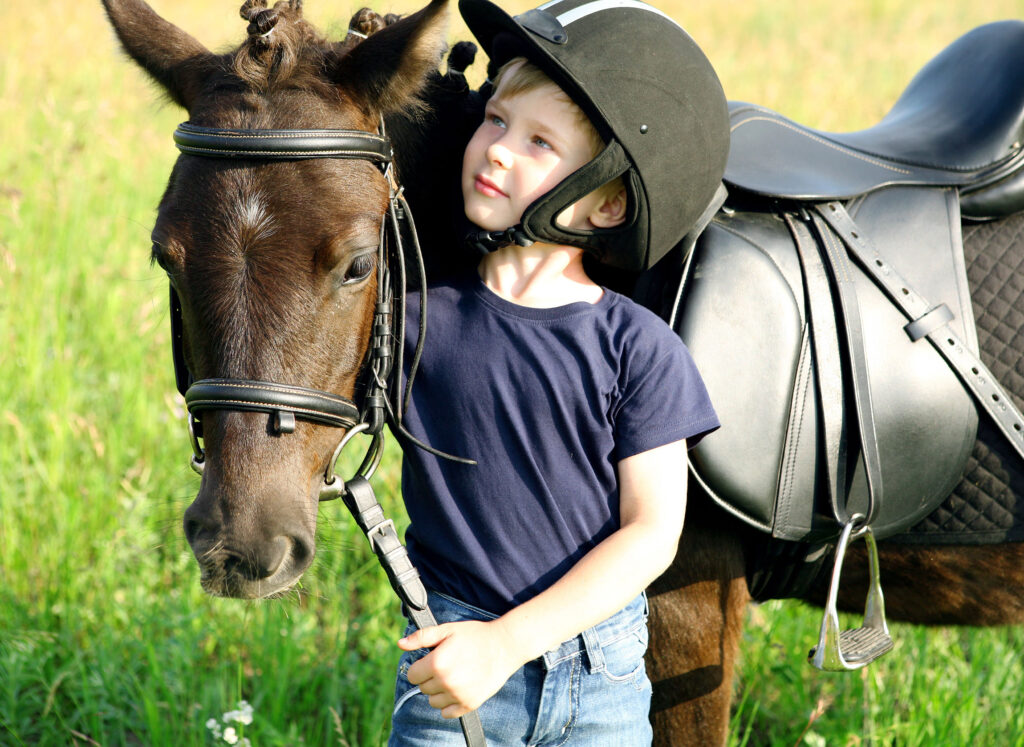
Benefits of Horseback Riding for Physical and Mental Health
Horseback riding offers numerous benefits for both physical and mental health. From a physical perspective, horseback riding provides a full-body workout, improving balance, coordination, and strength. It engages different muscle groups and helps with core stability. The rhythm of the horse’s movement also offers therapeutic benefits, particularly for individuals with certain physical disabilities or conditions such as cerebral palsy or multiple sclerosis.
On the mental health front, horseback riding has been found to be incredibly beneficial. The act of riding a horse promotes relaxation and reduces stress levels. It allows individuals to connect with nature and animals, fostering a sense of calmness and peace. Horseback riding also offers a sense of accomplishment, boosting self-esteem and confidence. The bond that forms between horse and rider can be incredibly therapeutic, providing a source of emotional support and companionship.
The History of Horseback Riding
The origins of horseback riding can be traced back thousands of years. The practice of riding horses dates back to ancient civilizations, including the nomadic tribes of Central Asia and the civilizations of Mesopotamia and Ancient Egypt. Horses played a vital role in transportation, warfare, and agriculture during these times. The equipment used in horseback riding, such as saddles, stirrups, and bridles, has evolved significantly over the centuries, improving comfort and control for riders.
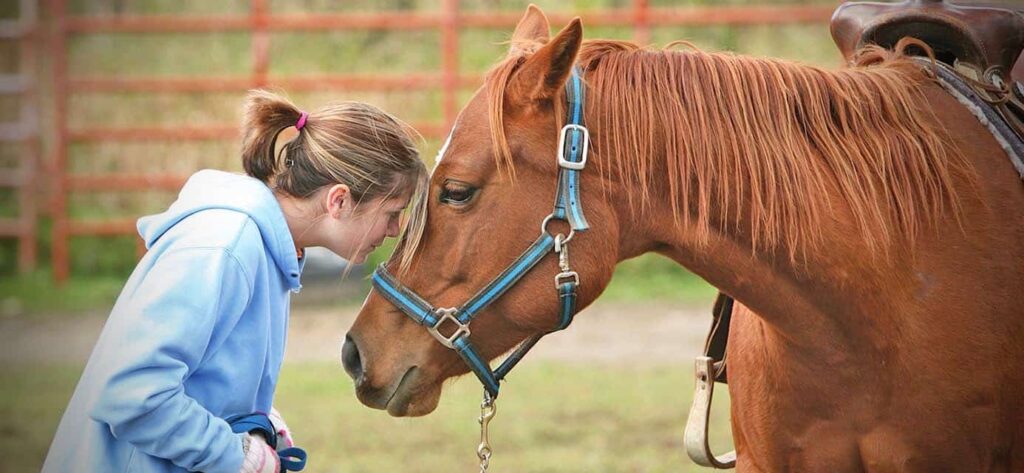
Equine Assisted Psychotherapy (EAP)
Equine Assisted Psychotherapy (EAP) is a type of therapy that incorporates horses into the therapeutic process. It is a collaborative effort between a mental health professional, an equine specialist, and horses. EAP utilizes the presence of horses to facilitate growth, learning, and healing in individuals struggling with various mental health issues. The focus is on experiential learning and interactions with horses, which can provide valuable insights into individuals’ emotions, behaviors, and relationships.
The Connection between Horseback Riding and EAP
Horseback riding serves as a foundation for Equine Assisted Psychotherapy. Riding allows individuals to develop a deeper understanding of the horse’s behavior, body language, and communication. By learning to ride and connect with the horse, individuals can develop essential skills such as empathy, trust, respect, and assertiveness. These skills can then be transferred and applied to personal relationships and daily life situations.
Experiential learning through horseback riding is a key aspect of EAP. By engaging in activities such as grooming, leading, or riding horses, individuals can gain a better understanding of themselves and their emotions. Horses are highly sensitive animals and can mirror human emotions, providing valuable feedback and insights. This experiential learning approach helps individuals process emotions, improve self-awareness, and develop effective coping strategies.
Equine facilitated activities, such as ground-based exercises or obstacle courses, are commonly used in therapy sessions. These activities allow individuals to work alongside horses, fostering teamwork, problem-solving, and communication skills. The presence of horses also creates a non-judgmental and safe environment, encouraging individuals to explore and express their thoughts and feelings freely.
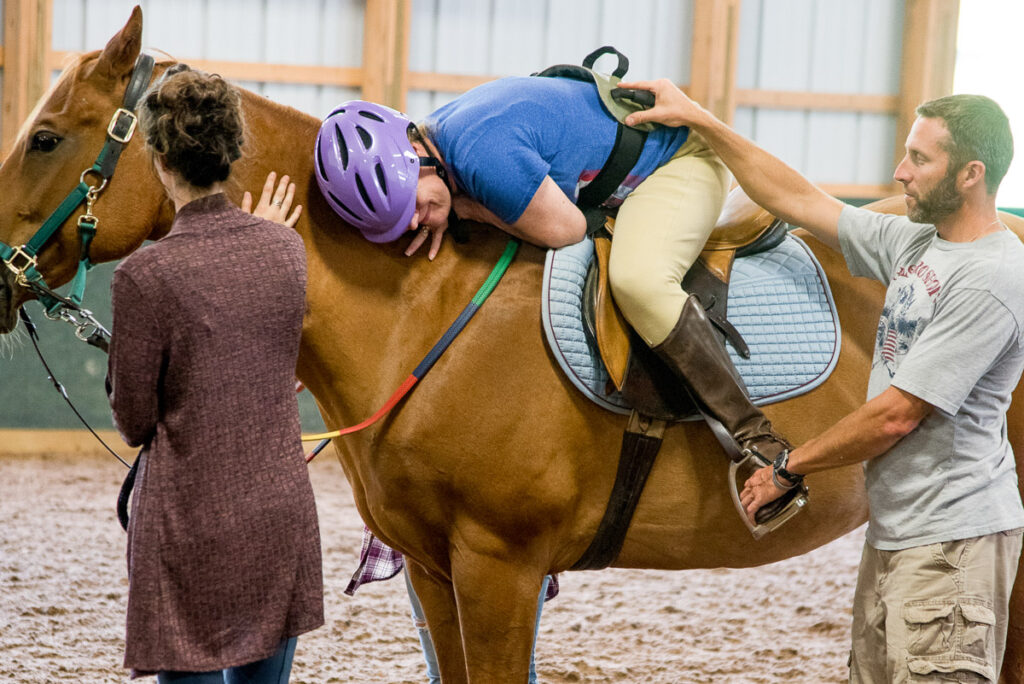
The Psychological Effects of Horseback Riding
Interacting with horses has been found to have numerous therapeutic effects on individuals. Spending time with horses can decrease stress levels, lower blood pressure, and improve overall mood. The rhythmic motion of horseback riding has a calming effect on the nervous system, reducing anxiety and promoting relaxation.
Horseback riding also offers opportunities for personal growth and development. It challenges individuals to step out of their comfort zones, building self-esteem and confidence. The bond formed with the horse can provide a sense of trust and emotional support, leading to increased emotional resilience and improved mental well-being.
Horseback riding has shown promising results in therapy for various mental health issues, including depression, anxiety, post-traumatic stress disorder (PTSD), and attention deficit hyperactivity disorder (ADHD). It offers a unique and engaging approach to therapy, combining physical activity, nature, and the nurturing presence of animals.
Training and Safety in Horseback Riding
Before embarking on horseback riding, it is essential to acquire the necessary skills and knowledge. Proper training is crucial to ensure both the rider’s and horse’s safety. Learning horseback riding skills and techniques involves understanding how to communicate with the horse effectively, mastering various riding positions, and learning how to navigate different terrains.
Understanding horse behavior and body language is vital for safe and successful horseback riding. Horses communicate through body language, and riders must be able to interpret their cues and respond appropriately. By understanding the horse’s behavior, riders can build a trusting and respectful relationship, ensuring a safer riding experience.
Safety precautions and equipment are essential for riders. Wearing appropriate riding gear, such as helmets and sturdy boots, can prevent accidents and minimize injuries. Regular maintenance and inspections of equipment, such as saddles and bridles, are also crucial to ensure their functionality and safety.
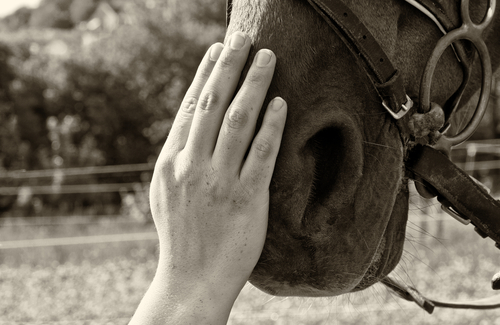
Horseback Riding as Recreation and Competition
Horseback riding offers endless possibilities for recreational enjoyment and competitive pursuits. There are numerous horseback riding destinations and trails around the world, allowing riders to explore beautiful landscapes while enjoying their passion. Trail riding provides an opportunity to connect with nature and immerse oneself in the tranquility of the great outdoors.
For those seeking a competitive aspect, horseback riding offers various equestrian events and competitions. These include disciplines such as dressage, show jumping, eventing, reining, and barrel racing, among others. Competing in horseback riding events allows riders to showcase their skills, receive feedback from judges, and experience the thrill of competition.
Equestrian events also foster a sense of community among riders. They provide opportunities to meet fellow equestrians, share experiences, and learn from one another. The camaraderie and support found in the horseback riding community create lasting friendships and connections.
Equine Care and Maintenance
Proper care and maintenance are essential for the well-being and longevity of horses. Grooming and feeding horses should be done regularly to ensure they remain healthy and happy. Proper nutrition is crucial to provide horses with the necessary nutrients for optimal performance and overall health.
Hoof care is another vital aspect of equine maintenance. Regular trimming or shoeing of hooves helps maintain proper balance and protects against injury. Regular veterinary check-ups are necessary to monitor the horse’s health, administer vaccinations, and address any potential issues or concerns.
Creating a suitable environment for horses is also important. Adequate shelter, pasture management, and access to clean water are essential for their well-being. Maintaining a safe and stimulating environment promotes both physical and mental health for horses.
Horseback Riding Equipment and Gear
To engage in horseback riding, certain equipment and gear are essential. Must-have equipment includes a properly fitted riding helmet, boots with a low heel, comfortable riding apparel, and gloves for maintaining a secure grip on the reins. Safety should be a priority when selecting and using riding gear.
Different types of saddles and bridles are available, depending on the style of riding. Dressage saddles provide the necessary support and balance for intricate movements, while Western saddles are designed for comfort during long rides. Bridles come in various styles and are chosen based on the level of control needed.
Choosing the right riding gear for different disciplines is essential to ensure comfort and safety. For example, show jumping requires protective gear such as a body protector to minimize the risk of injury during jumps. Eventing often requires specialized clothing and safety equipment. Riders should consult with knowledgeable professionals to select the appropriate gear for their chosen discipline.
Famous Horses in History
Throughout history, several horses have become legendary figures for their exceptional abilities, charisma, or contributions. These horses have found their place in literature, mythology, war, conquests, and even sports and entertainment. From the mystical Pegasus of Greek mythology to the heroic warhorse Bucephalus, horses have captured the human imagination and left a lasting legacy.
Literature and mythology are filled with notable horses, such as the loyal steed Shadowfax from J.R.R. Tolkien’s “The Lord of the Rings” series or the magical horse Sleipnir from Norse mythology. In history, famous horses like Alexander the Great’s Bucephalus or Napoleon Bonaparte’s Marengo played pivotal roles in their respective conquests.
In more recent times, famous horses have made their mark in sports and entertainment. Legendary racehorses such as Secretariat, Seabiscuit, and Black Caviar have captured the attention of the public with their unparalleled athleticism and competitive spirit. Movie stars like Trigger, Silver, and Black Beauty have become beloved icons, showcasing the beauty and grace of horses on the silver screen.
Horseback Riding Etiquette and Practices
When engaging in horseback riding, it is important to follow proper etiquette and practices to ensure a safe and enjoyable experience for everyone involved. Trail etiquette involves being considerate and respectful towards other riders, hikers, and wildlife. Yielding the right of way, maintaining an appropriate pace, and cleaning up after horses are some key aspects of trail etiquette.
Respecting and communicating with other riders is crucial for maintaining a positive and harmonious riding environment. Clear and concise communication helps prevent accidents, and being mindful of other riders’ comfort and safety is essential.
Proper care and treatment of horses also play a crucial role in horseback riding etiquette. Horses should be treated with kindness, respect, and patience. Understanding their needs, providing necessary care, and avoiding any forms of abuse or cruelty is of utmost importance.
Horseback Riding for Therapeutic Purposes
Horseback riding has been widely recognized for its therapeutic benefits, particularly in the field of physical therapy. Hippotherapy, a form of therapy that utilizes horse movement, has shown promising results in improving balance, coordination, and motor skills in individuals with physical disabilities. The rhythmic motion of the horse’s gait stimulates sensory input and helps improve muscle tone and strength.
Horseback riding benefits individuals with disabilities beyond just physical therapy. The connection formed between horse and rider can be incredibly therapeutic, providing emotional support and facilitating social interaction. Horse-assisted therapy has been successful in assisting individuals with autism spectrum disorder, cognitive disabilities, and emotional or behavioral issues.
Horses have also played a crucial role in therapy for veterans and trauma survivors. Equine Assisted Activities (EAA) and Therapies (EAT) have been effective in helping individuals with post-traumatic stress disorder (PTSD), anxiety, depression, and other mental health issues. The presence of horses provides a safe and non-judgmental environment, allowing individuals to develop trust, cope with trauma, and rebuild their lives.
Horse Breeds Suitable for Riding
Different horse breeds possess unique characteristics that make them suitable for specific riding disciplines. Warmbloods, such as the Hanoverian or Dutch Warmblood, are popular in dressage and show jumping due to their athleticism and elegance. Thoroughbreds, known for their speed and agility, excel in horse racing and eventing.
For leisurely trail riding or pleasure riding, many horse breeds are suitable. Quarter Horses, Appaloosas, and Arabians are known for their versatility and calm temperament. Icelandic Horses, with their unique gaits, are well-suited for endurance riding or long-distance treks. It is important to consider the breed’s characteristics and temperament when selecting a horse for a specific riding goal.
Conclusion
Horseback riding has a profound influence on Equine Assisted Psychotherapy (EAP) and offers numerous benefits for physical and mental health. The unique bond formed between horse and rider, along with the therapeutic effects of interacting with horses, provides a powerful tool for personal growth and healing. Whether engaging in horseback riding for recreation, competition, or therapy, the experience of connecting with these magnificent creatures is truly transformative. By incorporating horseback riding into therapy, individuals can explore their emotions, enhance self-esteem, alleviate stress, and embark on a journey of self-discovery and healing. So, saddle up and embark on this incredible adventure with horseback riding. It may just be the key to unlocking the healing power of horses in your life.
